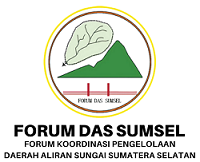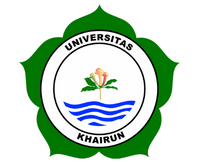Sustainable Nutrient Management in Sugarcane Fields
Abstract
The state of sugar in Indonesia which is decreasing in terms of production, the imbalance between production and consumption, can occur due to two things, both on-farm and off-farm. Planting in monoculture for a long period of time will cause reduced soil fertility conditions so that sugarcane productivity decreases. Sustainable nutrient management in sugarcane plantations is an effort made to obtain optimal and profitable productivity, while still trying not to damage the environment so that it can be sustainable and its productivity can be maintained in the long term. Several concepts for sustainability have been put forward by many experts, including the use of site-specific fertilizers, maintaining soil fertility by using sugar processing by-products and the use of humic. It is hoped that some of these application methods can maintain sugarcane plantations to be sustainable.
Keywords
Full Text:
PDFReferences
Ariningsih, E. (2014). Menuju Industri Tebu Bebas Limbah. Pertanian-Bioindustri Berbasis Pangan Lokal Potensial, 409–419.
Born, I., Edwards, a. C., Witter, E., Oenema C, O., Ivarsson, K., Withers, P. J. a, Nilsson, S. I., & Richert Stinzing, A. (2003). Element balances as a tool for sustainable nutrient management: A critical appraisal of their merits and limitations within an agronomic and environmental context. European Journal of Agronomy, 20(1–2), 211–225. https://doi.org/10.1016/S1161-0301(03)00080-7
Cherubin, M. R., Karlen, D. L., Franco, A. L. C., Cerri, C. E. P., Tormena, C. a., & Cerri, C. C. (2016). A Soil Management Assessment Framework (SMAF) Evaluation of Brazilian Sugarcane Expansion on Soil Quality. Soil Science Society of America Journal, 0(0), 0. https://doi.org/10.2136/sssaj2015.09.0328
Christofoletti, C. A., Escher, J. P., Correia, J. E., Marinho, J. F. U., & Fontanetti, C. S. (2013). Sugarcane vinasse: Environmental implications of its use. Waste Management, 33(12), 2752–2761. https://doi.org/10.1016/j.wasman.2013.09.005
Dengia, A., & Lantinga, E. (2016). Impact of Long-Term Conventional Cropping Practices on Some Soil Quality Indicators at Ethiopian Wonji Sugarcane Plantation. Advances in Crop Science and Technology, 04(03), 1–5. https://doi.org/10.4172/2329-8863.1000224
Dominy, C. S., Haynes, R. J., & Van Antwerpen, R. (2002). Loss of soil organic matter and related soil properties under long-term sugarcane production on two contrasting soils. Biology and Fertility of Soils, 36, 350–356. https://doi.org/10.1007/s00374-002-0538-5
Dotaniya, M. L., Datta, S. C., Biswas, D. R., Dotaniya, C. K., Meena, B. L., Rajendiran, S., Regar, K. L., & Lata, M. (2016). Use of sugarcane industrial by-products for improving sugarcane productivity and soil health. International Journal of Recycling of Organic Waste in Agriculture, 5(3), 185–194. https://doi.org/10.1007/s40093-016-0132-8
Eyheraguibel, B., Silvestre, J., & Morard, P. (2008). Effects of humic substances derived from organic waste enhancement on the growth and mineral nutrition of maize. Bioresource Technology, 99(10), 4206–4212. https://doi.org/10.1016/j.biortech.2007.08.082
Fageria, N. K., Baligar, V. C., & Clark, R. B. (2002). Micronutrients in Crop Production. Advances in Agronomy, 77(January 2002), 185–268. https://doi.org/10.1016/S0065-2113(02)77015-6
Franco, A. L. C., Cherubin, M. R., Pavinato, P. S., Cerri, C. E. P., Six, J., Davies, C. a., & Cerri, C. C. (2015). Soil carbon, nitrogen and phosphorus changes under sugarcane expansion in Brazil. Science of the Total Environment, 515–516, 30–38. https://doi.org/10.1016/j.scitotenv.2015.02.025
Ghulam, S., Khan, M. J., & Usman, K. (2012). Effect of Different Rates of Pressmud on Plant Growth and Yield of Lentil in Calcareous Soil. Sarhad J. Agric., 28(2), 8–11.
He, Z., Ohno, T., Cade-Menun, B. J., Erich, M. S., & Honeycutt, C. W. (2006). Spectral and Chemical Characterization of Phosphates Associated with Humic Substances. Soil Science Society of America Journal, 70(5), 1741. https://doi.org/10.2136/sssaj2006.0030
Iqbal, S. B., Muhammad, F., & Tontowi, I. (2012). Desain Proses Pengelolaan Limbah Vinasse dengan Metode Pemekatan dan Pembakaran. JURNAL TEKNIK POMITS, 1(1), 1–6.
Jayanthi, C. (2009). Improvement of Life Period of Biofertilizers by Addition of Humic Acid and Flyash. Asian Journal of Chemistry, 21(1), 781–786.
Jiang, Z. P., Li, Y. R., Wei, G. P., Liao, Q., Su, T. M., Meng, Y. C., Zhang, H. Y., & Lu, C. Y. (2012). Effect of Long-Term Vinasse Application on Physico-chemical Properties of Sugarcane Field Soils. Sugar Tech, 14(4), 412–417. https://doi.org/10.1007/s12355-012-0174-9
Kumar, V., & Chopra, a. K. (2016). Effects of sugarcane pressmud on agronomical characteristics of hybrid cultivar of eggplant (Solanum melongena L.) under field conditions. International Journal of Recycling of Organic Waste in Agriculture, 5(2), 149–162. https://doi.org/10.1007/s40093-016-0125-7
Leovini, H., Kastono, D., & Widada, J. (2014). Pengaruh Pemberian Jamur Mikoriza Arbuskular, Jenis Pupuk Fosfat dan Takaran Kompos terhadap Pertumbuhan Bibit Tebu (Saccharum officinarum L.) Pada Media Pasir Pantai. Vegetalika, 3(1), 22–34.
Mackowiak, C. L., Grossl, P. R., & Bugbee, B. G. (2001). Beneficial effects of humic acid on micronutrient availability to wheat. Soil Science Society of America Journal. Soil Science Society of America, 65(6), 1744–1750. https://doi.org/10.2136/sssaj2001.1744
Mellis, E. V., Quaggio, J. A., Becari, G. R. G., Teixeira, L. A. J., Cantarella, H., & Dias, F. L. F. (2016). Effect of Micronutrients Soil Supplementation on Sugarcane in Different Production Environments: Cane Plant Cycle. Agronomy Journal, 108(5), 2060. https://doi.org/10.2134/agronj2015.0563
Miao, Y., Stewart, B. a, & Zhang, F. (2011). Long-term experiments for sustainable nutrient management in China. A review. Agronomy for Sustainable Development, 31(2), 397–414. https://doi.org/10.1051/agro/2010034
Mukherjee, A., Lal, R., & Zimmerman, A. R. (2014). Impacts of Biochar and Other Amendments on Soil-Carbon and Nitrogen Stability: A Laboratory Column Study. Soil Science Society of America Journal, 78(4), 1258. https://doi.org/10.2136/sssaj2014.01.0025
Muscolo, A., Sidari, M., Attinà, E., Francioso, O., Tugnoli, V., & Nardi, S. (2007). Biological Activity of Humic Substances Is Related to Their Chemical Structure. Soil Science Society of America Journal, 71(1), 75. https://doi.org/10.2136/sssaj2006.0055
Prado, R. D. M., Caione, G., & Campos, C. N. S. (2013). Filter cake and vinasse as fertilizers contributing to conservation agriculture. Applied and Environmental Soil Science, 2013, 1–8. https://doi.org/10.1155/2013/581984
Purchase, B. S. (1980). Nitrogen fixation associated with Sugarcane. Proceedings of the South African Sugarcane Technologists, 173–176. https://doi.org/10.4319/lo.1973.18.6.0998
Rassam, G., Dadkhah, A., & Yazdi, A. K. (2015). Impact of Humic Acid on Yield and Quality of Sugar Beet ( Beta vulgaris L .) Grown on Calcareous Soil. Notulae Scientia Biologiae, 7(3), 367–371. https://doi.org/10.15835/nsb.7.3.9568
Robèrt, K. H., Schmidt-Bleek, B., Aloisi De Larderel, J., Basile, G., Jansen, J. L., Kuehr, R., Price Thomas, P., Suzuki, M., Hawken, P., & Wackernagel, M. (2002). Strategic sustainable development - Selection, design and synergies of applied tools. Journal of Cleaner Production, 10(3), 197–214. https://doi.org/10.1016/S0959-6526(01)00061-0
Russo, R. O., & Berlyn, G. P. (1990). The Use of Organic Biostimulants to Help Low Input Sustainable Agriculture. Journal of Sustainable Agriculture, 1(12), 19–42. https://doi.org/10.1300/J064v01n02_04
Schroeder, B. L., Wood, A. W., Moody, P. W., & Panitz, J. H. (2005). Sustainable nutrient management - Delivering the message to the Australian sugar industry. Proceedings of the South African Sugarcane Technologists, 79, 206–219. http://www.sasta.co.za/wp-content/uploads/Proceedings/2000s/2005_schroeder_sustainable nutrient management.pdf
Singh, K. P., Suman, A., Singh, P. N., & Lal, M. (2007). Yield and Soil Nutrient Balance of Sugarcane Plant-Ratoon System With Conventional and Organic Nutrient Management in Sub-Tropical India. Nutrient Cycling in Agroecosystems, 79(3), 209–219. https://doi.org/10.1007/s10705-007-9108-4
Solanki, M. K., Wang, Z., Wang, F. Y., Li, C. N., Lan, T. J., Singh, R. K., Singh, P., Yang, L. T., & Li, Y. R. (2016). Intercropping in Sugarcane Cultivation Influenced the Soil Properties and Enhanced the Diversity of Vital Diazotrophic Bacteria. Sugar Tech, 19(2), 1–12. https://doi.org/10.1007/s12355-016-0445-y
Swapna, S. S. M., Tong, V., Yi, X., & Mon, Y. (2016). Dev Sugar Industry in ASEAN CountrieDevelopment of Sugar Industry in ASEAN Countries. Sugar Tech, 18(6), 559–575. https://doi.org/10.1007/s12355-016-0497-z
Toharisman, A., & Triantarti. (2016). An Overview of Sugar Sector in Indonesia. Sugar Tech, 18(6), 636–641. https://doi.org/10.1007/s12355-016-0490-6
Vipin, S. K. S., & Jha, K. C. K. (2016). Effect of Integrated use of Bio-Compost and Nitrogen on Productivity and Soil Properties of Sugarcane Plant – Ratoon System in Calcareous Soil. Sugar Tech. https://doi.org/10.1007/s12355-016-0501-7
Wagner de Oliveira, M., Trivelin, P. C. O., Boaretto, A. E., Muraoka, T., & Mortatti, J. (2002). Leaching of nitrogen, potassium, calcium and magnesium in a sandy soil cultivated with sugarcane. Pesquisa Agropecuaria Brasileira, 37(6), 861–868. https://doi.org/10.1590/S0100-204X2002000600016
Y. C.Mo,Y.P.Ye, Q. Liang, andY. R. L. (2009). Effect of Vinasse on the Quality of Sugarcane and Key Enzymes in Sucrose Synthesis. Southwest China Journal of Agricultural Sciences, 22(1), 55–59.
Yadav, R. L., & Prasad, S. R. (1992). Conserving The Organik Matter Content of The Soil to Sustain Sugarcane Yield. Expl Agric, 28, 57–62.
Zhou, M. M., & Gwata, E. T. (2015). Location effects and their implications in breeding for sugarcane yield and quality in the midlands region in South Africa. Crop Science, 55(6), 2628–2638. https://doi.org/10.2135/cropsci2015.02.0101
DOI: https://doi.org/10.32502/jgsa.v2i1.3855
Refbacks
- There are currently no refbacks.
Indexed by:
Journal of Global Sustainable Agriculture
Diterbitkan oleh Fakultas Pertanian, Universitas Muhammadiyah Palembang
Contact Person:
Rika Puspita Sari, M.Si (+62 813-7490-0341)
Klinik Publikasi Pertanian
Faculty of Agriculture, Universitas Muhamamdiyah Palembang
JL. Jend. A. Yani 13 Ulu Palembang, South Sumatra, Indonesia
Tel. (+62)711-511731; Email: kppfpump@gmail.com; Website: https://jurnal.um-palembang.ac.id/JGSA

This work is licensed under a Creative Commons Attribution 4.0 International License.







1.png)

13.png)





